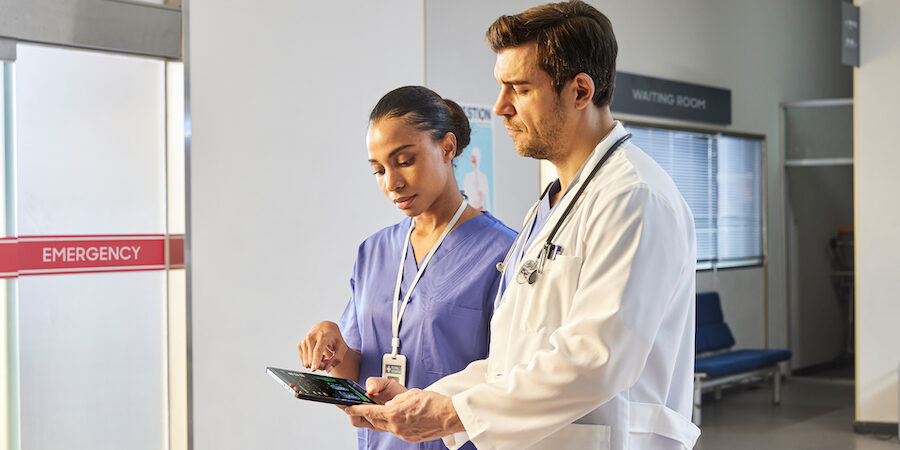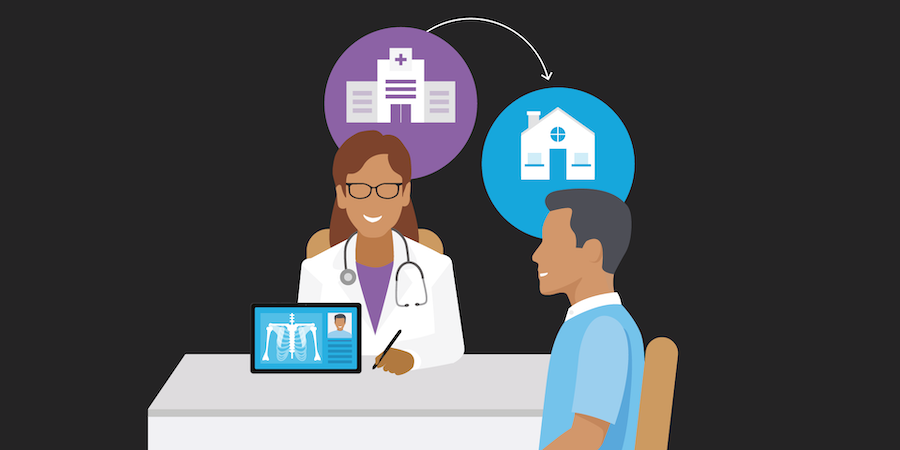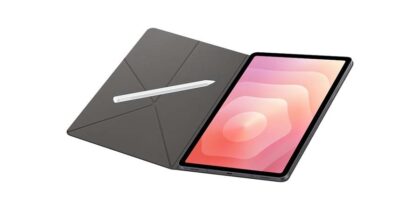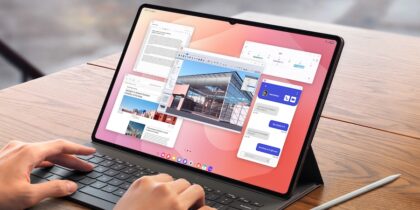Healthcare experts have long warned that the aging U.S. population could lead to a decades-long clinician shortage, and that was before the pandemic accelerated this trend.
Today, health systems are focused on finding ways to help burnt-out staff do more with less. While the nursing community works to increase its ranks, hospital leaders are finding innovative ways to redistribute nurses’ workload and boost productivity. They’re also investing in mobile health solutions that empower patients with self-service options, provide virtual “backup,” and streamline nurse communications with a single mobile device.
Nursing shortage by the numbers
Over the past decade, demand for medical providers and senior care services has steadily risen. At the same time, nurses have been retiring faster than nursing schools can replace them, and the pandemic prompted others to retire early.
“The nursing shortage started well before COVID-19 largely due to long-standing issues that cause nurse burnout, such as long working hours, emotionally abusive working environments, and heavier workloads due to increasing patient chronicity,” says Florence Kariuki, chief clinical officer at Health Recovery Solutions (HRS), a leading remote patient monitoring (RPM) solutions provider. “This was exacerbated during the pandemic and worsened by the increased exposure to disease as well as the demand for work/life balance as other supportive institutions such as schools closed.”
Last year, hospital turnover reached 6.4%, according to the 2022 NSI National Health Care Retention & RN Staffing Report. The average rate of those leaving the profession stands at more than 25%.
Nursing school enrollment is 5.6% higher in the U.S. than it was pre-pandemic, with more than 250,000 students currently preparing for nursing careers. But while those students are still in school, health systems need immediate solutions for existing nursing staff — and these solutions are increasingly powered by mobile devices.
Mobile devices like the Samsung Galaxy A54 5G, for example, offer healthcare organizations an affordable but powerful option to manage medical apps and facilitate communication and collaboration across care teams. A54 5G’s 6.4-inch screen offers plenty of room to view content, and packs in 6GB of storage. The phone’s long-lasting battery, meanwhile, ensures nurses have access to the digital tools they need throughout their shift, and an optical fingerprint reader ensures data stays secure.
Empowering patients with bedside tablets
Bedside tablets were already an emerging trend before the pandemic, thanks to mobile configuration providers like Equiva and OneView, which turn Samsung Galaxy tablets into hubs of inpatient infotainment. During their hospital stay, patients can use the customized tablets to view their health records and lab results, watch relevant educational videos assigned by their care team, access entertainment, communicate with their providers, order food, and request housekeeping services.
These solutions are designed to improve the patient experience, but they also boost nurse productivity. With on-demand information and self-service options, patients no longer push the nurse call button every time they need something or just have a question, and nurses are no longer solely responsible for patient education.
Hon Pak, M.D., chief medical officer at Samsung Electronics, explains, “The idea is to elevate nurses to perform at their highest state of license by relieving them of tasks that could be done by lower-level clinicians or by patients themselves. The Mount Sinai Health System in New York has been using Samsung devices for its bedside tablet program for two years, and they’ve seen a significant reduction in the amount of time nurses are spending on data entry and paperwork.”
Bringing in virtual “backup”
Patients can do some tasks for themselves, but more often they need a professional. It doesn’t always have to be their nurse or even someone in the building. By getting creative with videoconferencing and remote patient monitoring (RPM), hospitals can create a virtual pool of clinicians, ready to help fill the gaps for short-staffed nursing teams.
“If you really break down all the things that nurses do in hospitals, the breadth of tasks is just incredible,” says Pak. “Many of those tasks could be done virtually by nursing assistants, physical therapists, care navigators, and other people that are maybe not as trained as a registered nurse. They could also be done by nurses who are retired or can’t work full time, but can work from home when needed.”
Improve the patient experience with mobile
From check-in to remote monitoring, get your free guide to elevating care with mobile technology. Download Now
Kariuki has seen HRS hospital clients use bedside tablets to support the floor nurse with a virtual nurse, as well as remote patient-sitters. Alleviating some of the in-person nurses’ workload, virtual nurses also augment their work by providing remote patient education and handling calls to the lab, the pharmacy, and the patient’s family.
The same technology allows for virtual discharge education. “Sometimes patients wait for hours for their nurses to find time to do patient education and complete discharge paperwork,” says Kariuki. “Now some hospitals are providing virtual discharges from a well-trained virtual nurse or a case manager sitting somewhere centralized, with all the right information at hand. This increases floor nurse productivity and improves the hospital’s throughput.”
Streamlining communication and collaboration with a single device
When nurses have smartphone-based access to EHR and secure real-time communications through a device like the Samsung Galaxy A54 5G, they save precious time that otherwise would have been spent trekking to and from an available computer, tracking down colleagues, paging physicians, and waiting for their calls to be returned. Instead, they have all the information they need in the palm of their hand, they can add to patient charts in real time, and they can call or text other clinicians directly — all from a single device.
“What mobile technology really enables is workforce optimization,” says Pak. “Providing nurses with mobility solutions that combine and automate various tasks into one device — whether it’s clinical communications, barcode administration, or charting — boosts their productivity.”
By streamlining the administrative parts of the job, and redistributing tasks that don’t require a nursing degree, hospitals give nurses more time to treat patients. And amid staff shortages, nurses can see more patients without compromising quality of care or their personal well-being.
Learn more about mobile clinical communications in this free comprehensive guide. And discover more innovative healthcare solutions from Samsung.









